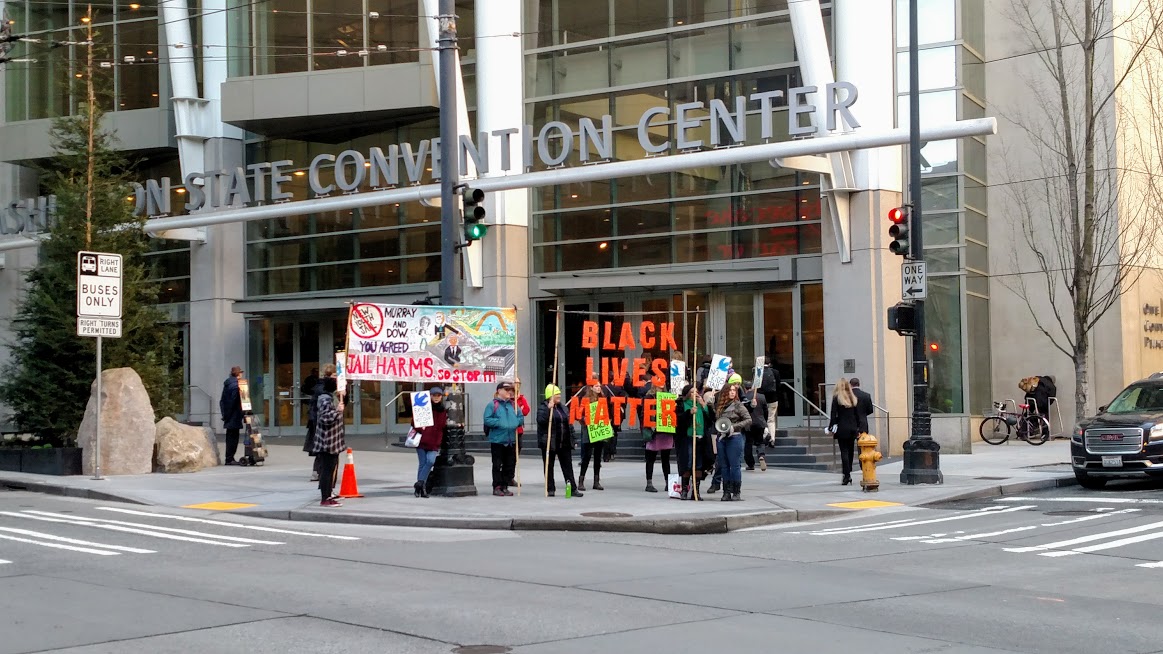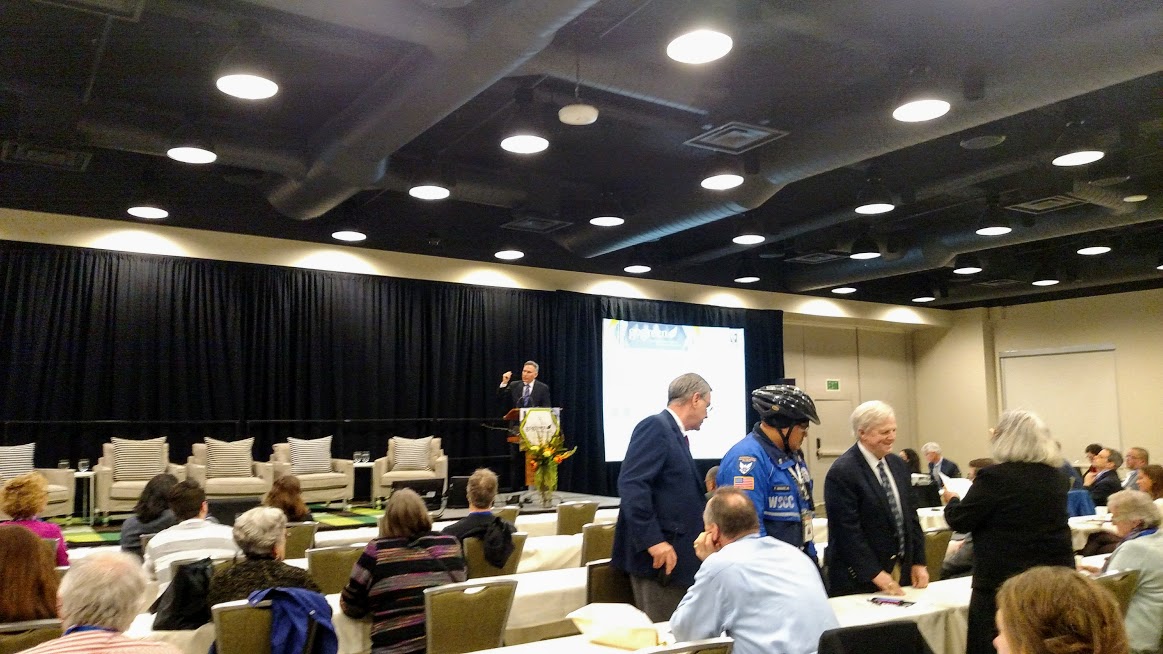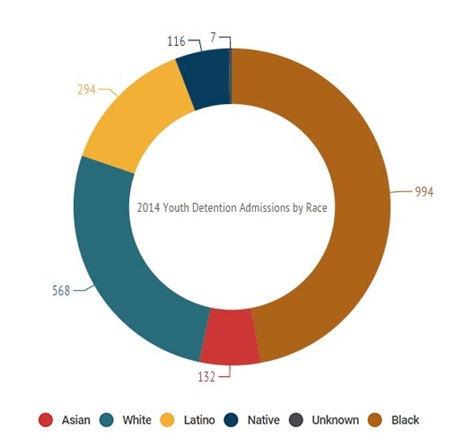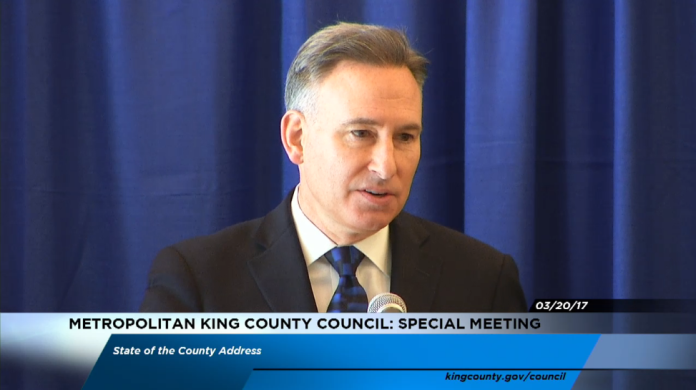During his State of the County speech yesterday, King County Executive Dow Constantine unveiled plans to open two reception centers for youth accused of minor crimes as part of a larger strategy to seek zero youth incarceration in King County. The plan responds to the criticisms that criminal justice activist groups like Ending The Prison Industrial Complex (EPIC) have raised as Constantine presides over voter-approved plans to construct a new Children and Family Justice Center, often referred to as the youth jail, in the Central District.
By the way, another thing Executive Constantine is presiding over this year is a re-election campaign as he seeks his third term in 2017.
The new County facility would replace the older youth jail at 1211 E Alder St and pair it with 10 courtrooms, but critics say its price tag, which has ballooned to $225 million, is too expensive and, by maintaining 112 jail cells for kids, doesn’t serve Seattle’s and King County’s goal of reaching zero youth detention. Notably, King County Councilmember Rob Dembowski has joined ranks with youth jail opponents and co-authored an op-ed against it with Seattle City Council President Bruce Harrell.
In his speech, Dow Constantine fired back at those critics:
To navigate the rest of this journey, to reach our goal, we need a map. A plan. Saying “we’ll try to do even better” is not a plan. Shouting “Zero Youth Detention” is not a plan either. I will invite this Council, community members, and criminal justice leaders to join me in creating that Road Map to Community Safety and Effective Alternatives to Detention. (I warn you ahead of time there may very well be day-long Peacemaking Circles!)
The subtext being Constantine sees nothing wrong with spending $225 million on a building rather than investing in people as EPIC and Black Lives Matter activists have argued would be wiser.
Road Map To Effective Alternatives To Detention
Constantine contends he is the one with a road map to zero detention, not the activists shouting “zero youth detention.”
Today, I call for the creation of two community-based reception centers that we will call “Safe Spaces”–where police can bring a youth accused of a lesser offense instead of to booking and detention.
These facilities–one in Seattle, the other in South King County–will be welcoming places where young people can also come in on their own, or with a parent or relative, or via a community organization.
Trained professionals will interview the youth, determine the best way to help, and coordinate appropriate assistance and intervention. And then the police, if they are involved, can finish their report and leave.
Safe Spaces, based on a successful model in Portland, will be staffed around the clock, and will offer food, clothes, even a safe place to stay the night. There will be connections to housing, education, and the services youth and families need to get back on track.

Constantine addressing no-new-youth-jail critics head-on is understandable. Those critics have increased their presence and interrupted his public appearances to protest his moving forward with the youth jail. At the Go Green Conference on March 16th, Constantine had to cut short his speech as a series of protesters shouted him down and interrupted him with protest songs. With his State of the County vision, Constantine seems to be charting a route forward for the planned new youth jail for which he as county executive is ultimately responsible while still being seen as making progress on the “journey” to zero detention and hearing concerns of minority voices in the county.

The Slow March Of Progress
Toward that goal, Constantine touted the County’s juvenile justice successes.

“I should say ‘the rest of the journey’, because it is a fact that King County is a recognized leader in the nation in alternatives to detention and prosecution. Our judges, prosecutor, community organizations and many others have helped King County reduce the average daily youth detention rate to among the lowest of any major jurisdiction in the nation,” Constantine said. “And, we are one of the first major jurisdictions to simultaneously reduce the rate of detention and racial disproportionality.”
Even a few years back, that disproportionality was staggering. Using 2014 numbers, EPIC pointed out in a lawsuit that “eight percent of county youths are black, but they represent about half of those detained.” Apparently the County has begun turning that around.
Meanwhile, even Constantine acknowledged that restorative justice alternatives are superior: “We have better, safer, more therapeutic options than detention–but must also prevent earlier conditions in life that lead to detention.” Nonetheless, Constantine reiterated a practical need to maintain a youth jail and to proceed incrementally: “Until we reach zero youth incarceration, there will be a need for secure detention–both for the public and youth.” In essence, he’s expressing a chicken and egg problem. Until, you stop jailing kids, technically you still need a youth jail to contain them.
King County posted a video of Executive Constantine’s speech for those interested in watching.
Responding to activists on a different front, Constantine discussed increasing education and arts funding via a program called “Access For All.” The program would fund more arts, science and heritage education, support museums, theaters, and musical training programs, and boost the capacity of regional organizations to serve low income populations. Access For All would be paid for by a one-tenth of a cent sales tax.
Constantine addressed homelessness, touting reforms for the County to take over “Coordinated Entry” and add performance metrics to service provider contracts. “These reforms create results,” Constantine said. “We are determined to make homelessness rare–and we secured stable, permanent housing for more than 3,000 families last year–up 10% from just the year before.” Hopeful rhetoric but 2016’s one-night unsheltered homeless count was an all-time high of 4,505 people. 2017’s one-night count was conducted in January but results have not yet been released.
A Formidable Campaigner
Constantine won re-election in 2013 with 78% of the vote, which set a record margin of victory for the office. That alone makes him a formidable opponent in 2017; since re-election, he’s kept his nose to the grindstone with notable victories like leading Sound Transit as it won passage–with 58% voter support in King County–of an ambitious ST3 package that will add 62 miles of light rail and 64 miles of bus rapid transit to Sound Transit’s transit network. “When fully built, 93% of the region’s jobs will be connected by high capacity mass transit,” Constantine boasted in his speech.
Constantine highlighted other policy victories including serving 150,000 people with the 2011 Veterans and Human Service Levy, implementing Best Start For Kids, rolling out improved bus service with RapidRide, planning for RapidRide expansion, introducing Orca Lift to lower transit fares for low-income riders, and investing $26 million this year to help build 800 affordable housing units. The bus investments and extension of light rail to Capitol Hill, Husky Stadium, and later Angle Lake allowed the Seattle area to grow transit ridership by 4.1% to lead the nation in a year when most regional agencies lost ridership.
Nonetheless, racial equity and criminal justice each remain among Constantine’s few vulnerabilities. It’s unlikely to affect his coronation for a third term, but the campaign season could give activists further opportunity to highlight those issues. And the County has yet to break ground on the youth jail giving opponents just a little more time to plead their case. With such a decisive victory in 2013, Constantine seems a politician with political capital to spare–capital that could be used on rethinking the youth jail–but it could be the popular King County Executive has his eyes set on higher office and bigger races yet to come. Or maybe he just likes winning by 56% margins.
Doug Trumm is publisher of The Urbanist. An Urbanist writer since 2015, he dreams of pedestrian streets, bus lanes, and a mass-timber building spree to end our housing crisis. He graduated from the Evans School of Public Policy and Governance at the University of Washington in 2019. He lives in Seattle's Fremont neighborhood and loves to explore the city by foot and by bike.



